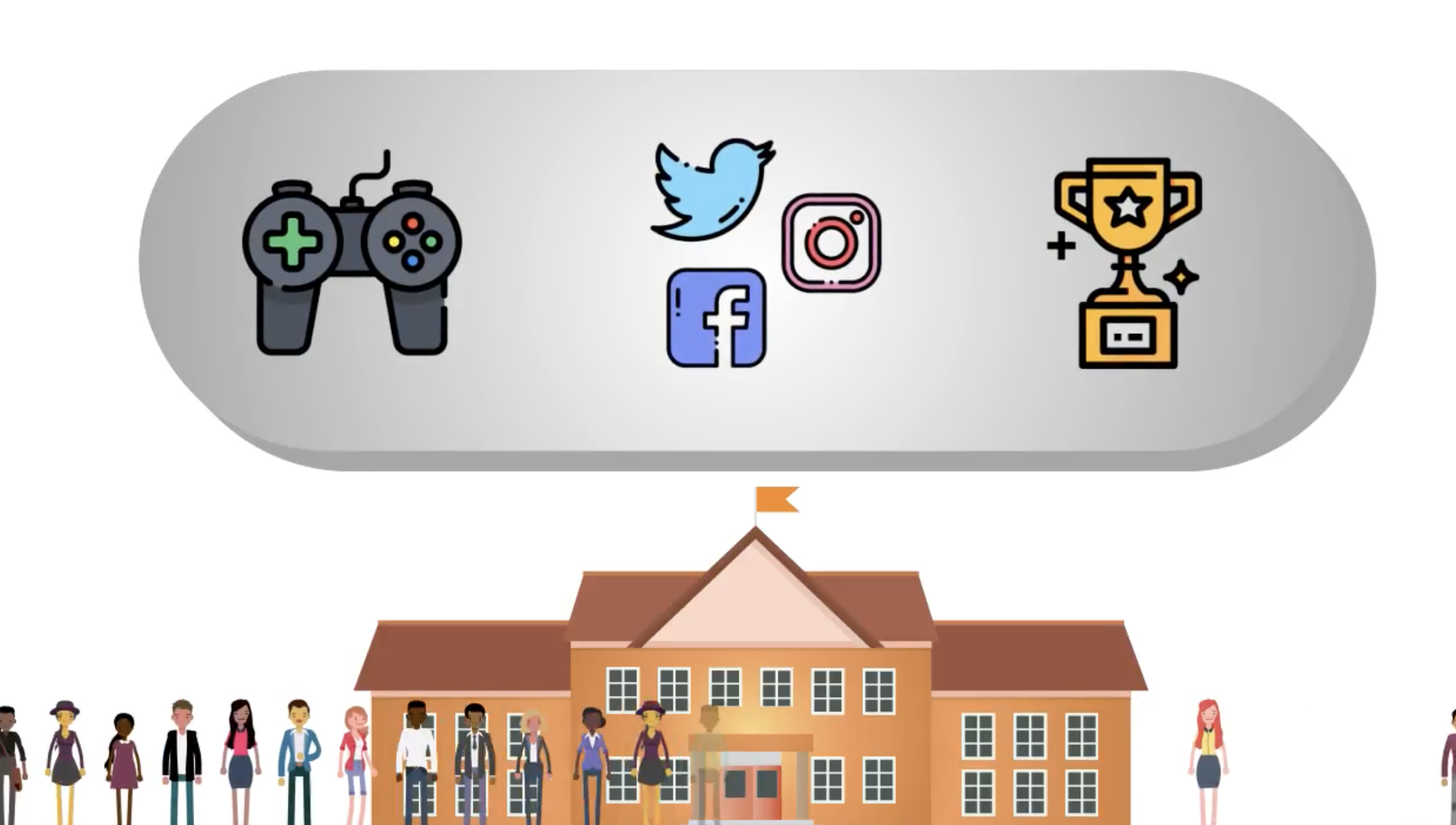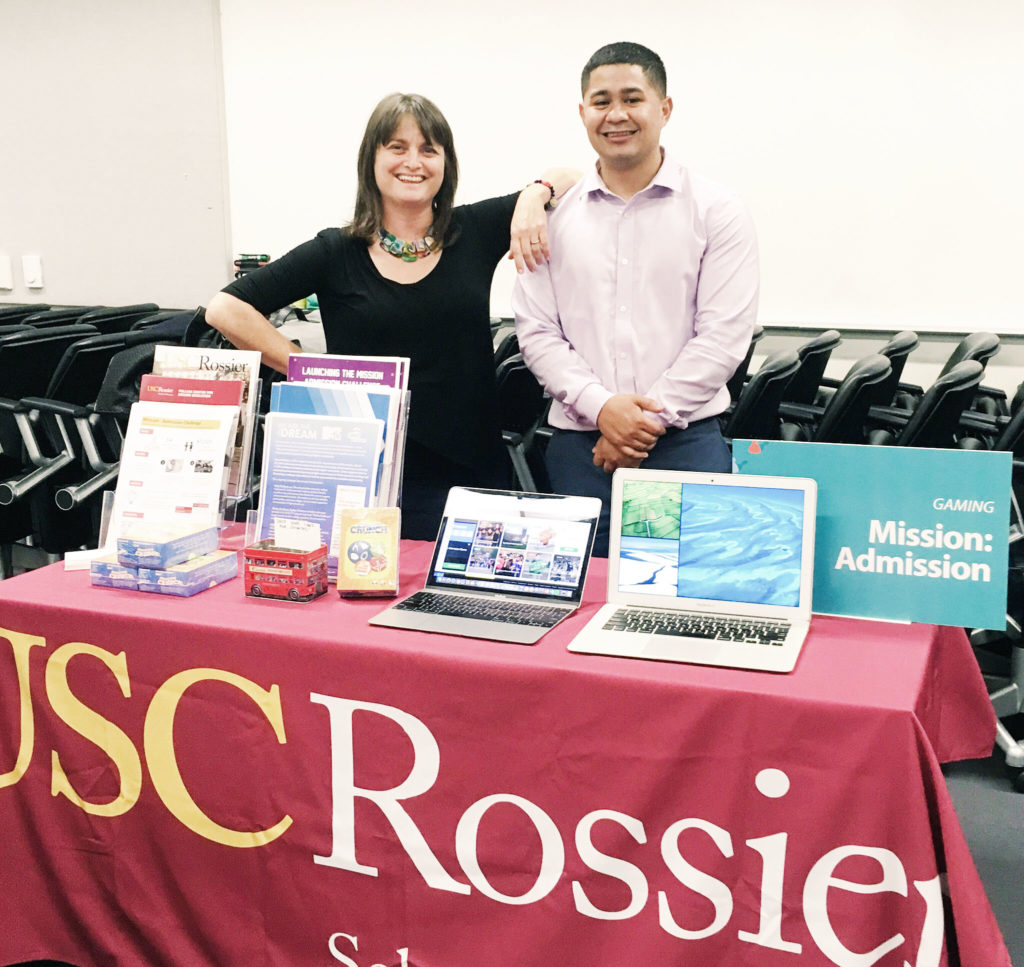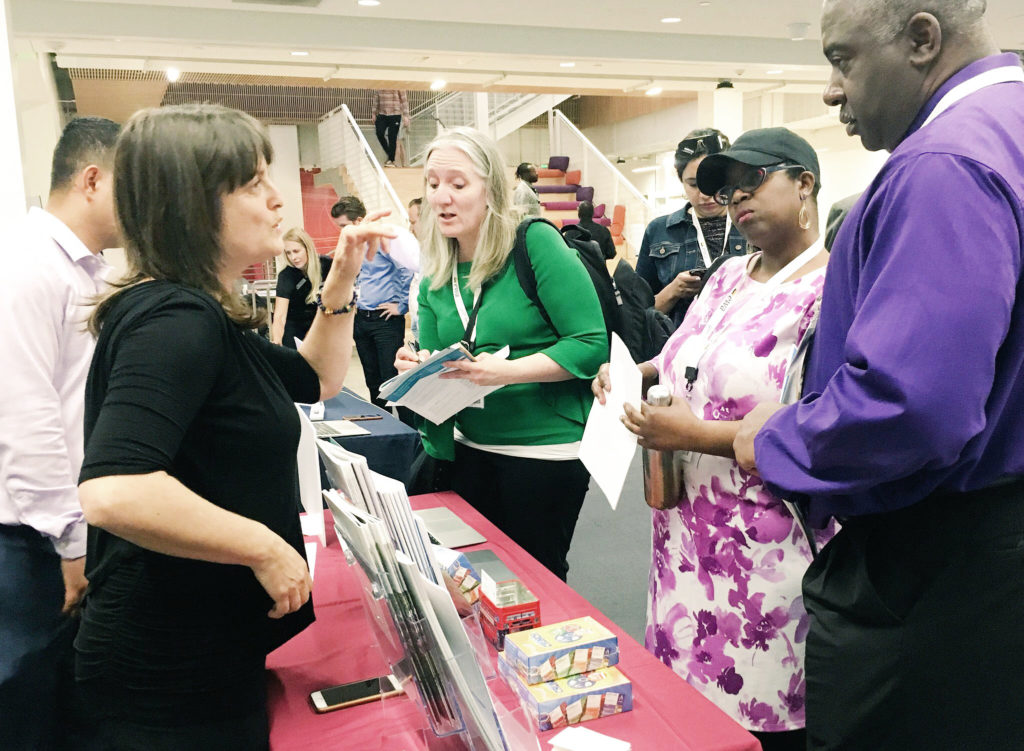
How to gamify the college application process
Pullias researcher Zoë B. Corwin explains how tech tools can help bridge the college access gap.
If at first you don’t succeed, try, try again. In fact, try it a few times through a role-playing game first — so that when it comes time to take action in real life, you’ve already learned from your mistakes and know how to succeed!
That’s the idea behind Mission: Admission, a digital game that lets students role-play a college applicant trying to juggle financial aid and admissions deadlines, college selection decisions, and more. The game was developed by USC Pullias Center for Higher Education’s Digital Equity in Education team in partnership with USC’s Game Innovation Lab, and supported with a social media campaign by the nonprofit Get Schooled. Then, the Pullias’ team tested the role of gamification strategies to improve college access in 54 high schools across California.
The findings from that study are still coming in, but early data looks promising. In the schools where the game was made available, FAFSA and CA Dream Act application rates went up by 7 percent over two years.
This week, at the 2018 Education Writers Association conference held at USC, journalists and others in the education community got to learn about and play Mission: Admission and Get Schooled firsthand at the conference’s Show and Tell Interactive Playroom.

Zoë B. Corwin, project lead of Pullias’ Digital Equity in Higher Education project, explained at a panel on improving Hispanic access to higher education that an approach like the Mission: Admission Challenge can help students get better at their college application process through trial and error.
“Imagine a social media campaign that goes into a high school that gamifies the process,” Corwin said. She explained that students might not “win” the game the first time, but could figure out how to do better after a few rounds — and apply that knowledge in real life. “They will learn those lessons and gamify their strategy.”
Corwin added that simply introducing a tech tool isn’t enough; schools need to consider how to effectively implement digital tools, making the resources easily accessible to students and guiding them to make smart use of new technologies. Her team’s new short animation, “How to Launch a Digital Intervention in Schools,” highlights the key factors to consider when introducing a digital tool or program to students.
Corwin also highlighted other faculty members at the Pullias Center working on research related to Latinx students and access to higher education:
- Pullias co-director Adrianna Kezar studies Latinx students and STEM trajectories in higher education by researching challenges and best practices within the California State University System.
- Pullias researcher Julie Posselt analyzes undergraduate and graduate admissions practices across diverse student groups, including the Latinx population.
- Pullias researcher Tatiana Melguizo studies remedial math placement policies in community colleges, which has high implication for Latinx students.
A report on the findings of the Mission: Admission project will be published in July 2018. To get a free copy of the report, join the Pullias Center’s email list. For more information about the project and to play Mission: Admission online, visit pullias.usc.edu/digitalequity.
